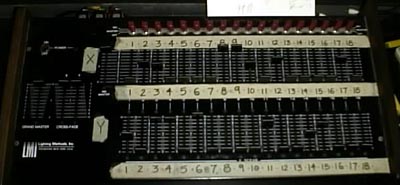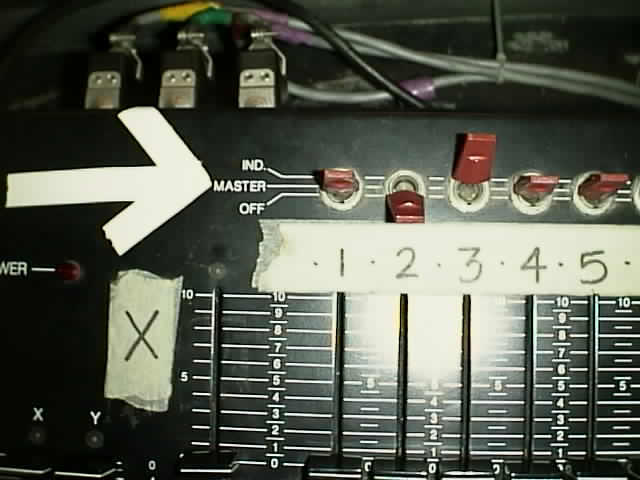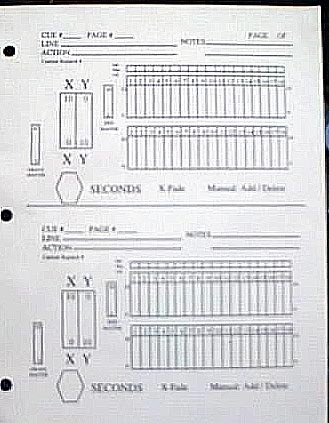The main theater of the Edward R. Murrow High School uses the ETC Express 48/96 computer control board. I believe that this is one of the best boards for educational theater. It’s also a great board for theaters that have several different types of shows going on at any given time. It can be programmed to repeat cues with a single GO button. Or, you can use it like a regular two-scene pre-set board. I tend to use the manual functions when we have outside rental groups use the theater. Programming the computer part just takes too long with only one rehearsal. For more info: http://www.etcconnect.com


How to use the light board:
The most important part of manual light board operation is to know what all of the sliders and switched do. On a two scene preset board there is the on/off switch, the grand master slider, the cross-fader, the independent master slider, and the X & Y sub-boards.
The grand master is a fader that controls the whole light board. When it is at 0, the whole board is off. When it at 10, the whole board is at full power.
The X & Y sub-boards have sliders on them that control all of the dimmers. Both sub-boards have the same number of sliders with the same numbers (labeled 1-18). The two sliders that are labeled 1 control the same dimmer. The same goes with the sliders labeled 2 and so on.
The reason for two sub-boards is so you can use the cross-fader. If the cross-fader sliders are in the up-most position, only the sliders on the X sub-board work. Any slider that is up on the Y sub-board will not turn on lights. The cross-fader is advantageous because you can set up a whole scene without the lights turning on. When you are ready to switch scenes you can move the cross-fader so that the sliders on the Y sub-board turn on.
When the red switches are in the up position (IND.) the dimmers work by the independent master. This one slider can bring up many dimmers at the same time. When they are in the middle position ( ) the dimmers work normally. When they are in the down position (OFF) the dimmers they control are off and will not work.
The light board operator knows what he/she does because a cue sheet is used. A cue sheet may look exactly like the board itself. It tells you which dimmers go up, whether there is an add or delete or cross-fade. It says what the count of the cue is and there is even space to write down the line when the is supposed to go.





Recent Comments